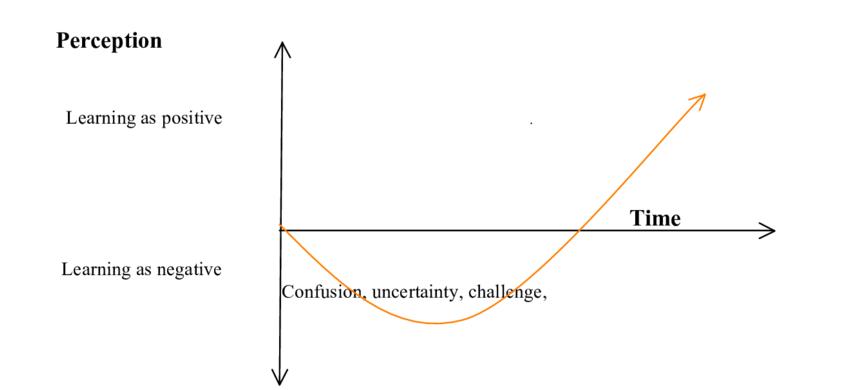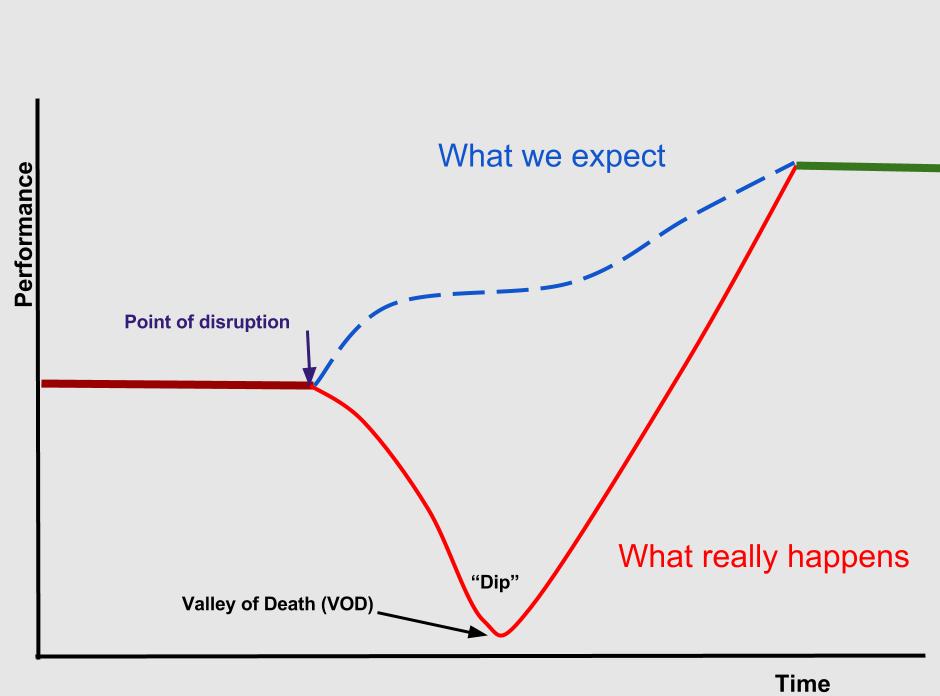By Michael K. Adonteng
Dec 6th, 2024
In any project, especially those involving significant change or complex implementations, enthusiasm tends to wane at certain points. This predictable pattern, known as the “Motivation Dip,” can be seen across industries and client interactions. Initially, there’s excitement around new possibilities and improvements. However, as the reality of implementation sets in—with its unforeseen challenges, required adjustments, and resource demands—motivation can dip sharply before rising again as results begin to materialise.
Helping clients navigate this dip not only preserves trust but also sets the foundation for a successful long-term relationship. Here’s how you can manage and address the motivation dip with your prospects and clients, particularly in the context of African markets.
1. Anticipate the Dip: Set Realistic Expectations Early On
One of the most effective ways to address the motivation dip is to anticipate it. During the initial sales discussions, while enthusiasm is high, it’s essential to set realistic expectations. Be transparent about potential hurdles and make clients ( Your Champions and coaches ) aware that the initial excitement might wane as they encounter challenges. Preparing your champions and coaches for the journey ahead helps avoid frustration and disappointment, as they’ll understand that the dip is a temporary phase rather than a sign of failure.
For example, if you’re implementing a new sales technology for a client in the financial services sector, you might highlight that the first few weeks of adoption may feel challenging, with team members adjusting to new workflows. By openly acknowledging the dip, clients are less likely to become disillusioned when it arrives.

2. Break Down the Implementation Process into Clear Stages
When a project feels overwhelming, motivation is more likely to dip. Breaking down the implementation process into manageable stages provides clients with a clear roadmap. Each milestone represents a tangible success that keeps momentum going. Ensure that each stage is celebrated and that clients recognise the progress they’re making along the way.
For instance, if you’re helping a client with a multi-phase go-to-market strategy, outline specific achievements they can expect at each stage—whether it’s completing market research, finalising messaging, or reaching the first target audience. This approach keeps clients motivated through smaller, measurable wins, making the overall implementation feel less daunting.
3. Reinforce Value Throughout the Dip
One reason the motivation dip can be so profound is that clients begin to lose sight of the end goal as they become bogged down by day-to-day challenges. To keep the vision alive, reinforce the value and benefits of the solution consistently throughout the process. Remind them of the initial reasons they decided to move forward and the positive outcomes they’re working towards.
For example, during challenging stages of implementing a new customer relationship management (CRM) system, remind your client of the improved customer insights, streamlined processes, and potential revenue growth they’ll achieve once the system is fully integrated. By consistently highlighting the long-term value, you help clients stay focused on the benefits rather than the obstacles.
4. Provide Support and Celebrate Small Wins
Motivation is often sustained through recognition and reinforcement. As a trusted advisor, proactively offer support when you see clients approaching or entering the motivation dip. This could involve scheduling regular check-ins to assess their progress, answering questions, and addressing any concerns they might have. Celebrating small wins along the way can also make a significant difference in sustaining their motivation.
If, for example, a client’s team completes the first phase of training on a new software tool, acknowledge this accomplishment and share encouraging feedback on how it’s moving them closer to their ultimate goals. These small celebrations remind clients of their progress, rekindling enthusiasm as they work through the dip.
5. Establish a Joint Monitoring System for Progress and Feedback
A strong feedback loop helps clients feel more in control during challenging stages. Establish a shared system for monitoring progress and gathering feedback, allowing clients to voice their concerns and track their achievements. For African markets, where client expectations may vary across regions, this can be especially helpful in adapting support to local needs.
For instance, create a project dashboard or regular update schedule where both your team and the client’s team can view milestones achieved and any upcoming tasks. By engaging clients in this way, you reinforce collaboration and empower them to actively participate in overcoming the dip.
6. Remain Patient and Flexible: Adapt as Needed
Every client’s journey through the motivation dip will be unique, and some may need additional support to get through it. Remaining patient and flexible, and being ready to adjust the plan if necessary, can build trust and show clients that you’re committed to their success. Flexibility is key, especially in Africa’s diverse market environment, where external factors can influence project timelines and resources.
If a client’s implementation is delayed due to local market changes, adjust expectations together, rework the timeline, and reinforce your commitment to supporting them through the process. Your adaptability can turn potential frustration into trust and partnership, strengthening the client relationship.

Conclusion: Turning the Motivation Dip into a Strategic Advantage
The motivation dip is a natural phase in any significant project, but it doesn’t have to be a deterrent. By anticipating the dip, setting realistic expectations, and reinforcing value throughout, CSOs and sales teams can guide clients through this period with minimal frustration. Each interaction during the dip is an opportunity to demonstrate reliability, empathy, and commitment to the client’s success, ultimately turning a challenging period into a strategic advantage.
By helping clients through the motivation dip, you not only improve the chances of a successful project but also build lasting partnerships rooted in trust and shared success.
 Michael K. Adonteng
Michael K. Adonteng
Founder, ASA